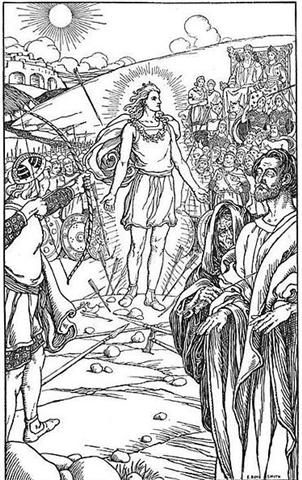These are the glyphs from January 13 up to day 383 (just before 13 * 29½):
My idea of 153 days of 'Sea' to 73 + 80 = 153 fits well with 231 and 384, because 231 + 153 = 384. Furthermore, July 6 (187) - 153 = 34 (February 3) and 34 + 365 = 399. But possibly January 3 would be a better date, in which case we could adjust from July 6 (187) to June 6 (157). The 'Sea' could stretch for 153 nights from January 4 to June 6, equal to the distance from 231 (at the beginning of side b of the G tablet) to 231 + 153 = 384 (= 2 * 192). The Arrow (Sham, α) rose heliacally in January 13 (possibly alluding to 113 = the RA day of Castor). The Arrow constellation is inside the Milky Way and higher up than Sagittarius (Pabilsag), not far from Eagle & Dead Man. Possibly the Arrow has an eagle's feather in its tail:
4 days after January 13 we can read that Sun (manu kara etahi) has 'gone to the fishes' (we can see from his body). The point (ihe) of the Arrow had obviously struck its target.
Such a major event would not have been forgotten through the millenia. In G it is described as a loss of 'head' (8 * 30 = 240 days from the beginning of the text):
The eye-spangled screen of the Peacock's tail feathers could hide what happens next. |












